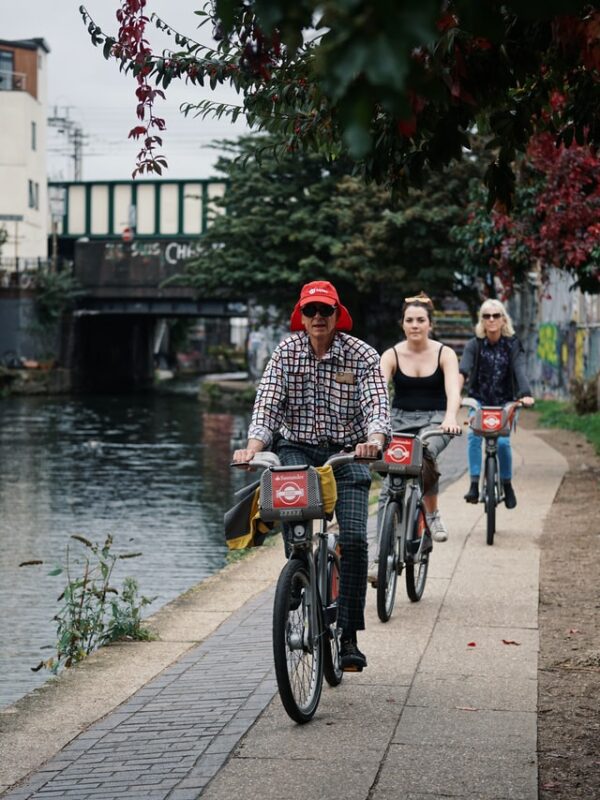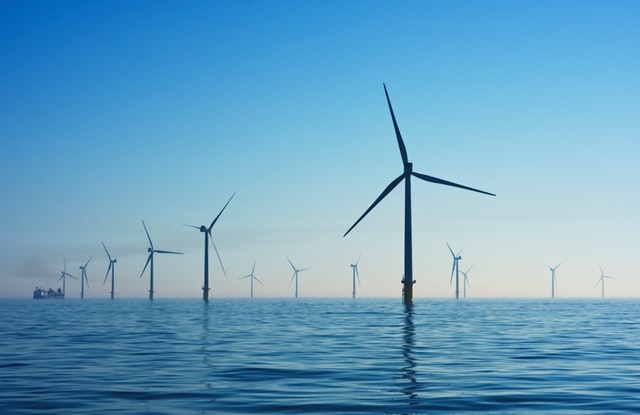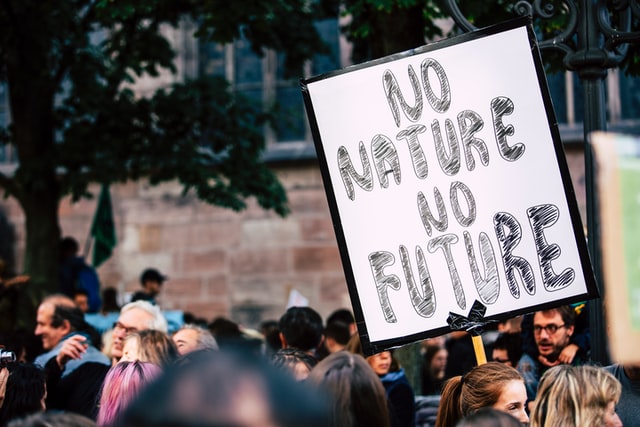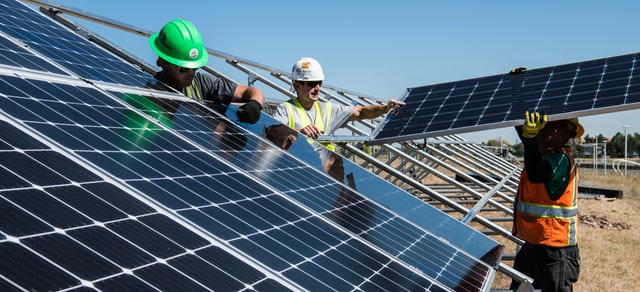
If you’re an eco-conscious traveller like us, you have probably looked into carbon offsetting at some point. It’s a straightforward enough concept: you pay a carbon-capturing initiative that uses your money to ‘offset’ the carbon your travels emit. Sounds great. But is it really that simple?
This article takes you through everything you need to know: from what carbon offsetting is, to its pros and cons, and how to make your own offsetting decisions. Let’s dig in.
We all know that every action has consequences, and this extends to our environmental impact. A carbon footprint is a useful way to visualise our contribution to climate change, by adding up the carbon emissions of our lifestyles. This involves how we use energy, what we buy, eat, and how we travel.
A person’s footprint can vary hugely depending on individual and societal choices. According to the World Economic Forum, the average UK citizen was responsible for 5.65 tons of CO2 emissions in 2016, while the average Indian citizen emitted only 1.57 tons. The USA topped the charts with a whopping 14.95 tons per citizen...no surprise there.
We all know there are things we can do to reduce our personal footprint, such as changing our diets, swapping the car for a bike, and being thrifty with the central heating. Offsets provide another option: by funding projects that absorb (or prevent emissions of) greenhouse gases, you can theoretically shrink the impact of your footprint.

Whether this ‘counts’ or not is a matter of opinion. The line has to be drawn somewhere. For instance, most people would say that voting for a greener government does not affect your personal footprint, even though in theory it could make a difference. Or what about convincing your friends to go veggie - does that count? Carbon footprints are a useful concept only up to a certain point, as they help us visualise our impact.
Offset projects tackle emissions in a variety of ways. Some focus their climate action on carbon capture, which involves directly removing CO2 or other greenhouse gases from the atmosphere. Trees are the most obvious examples of this. Others focus on preventing future emissions, such as by providing energy-efficient appliances, supporting renewable energy projects, carbon credits, or working on ways to capture greenhouse gases at the point of emission.

It’s also worthwhile thinking about the ‘side-effects’ of such offset projects. Occasionally these can be negative - tree planting on arable land isn’t often good news for farmers, for example - but most often they can be positive. For instance, improvements in energy efficiency can mean communities don’t have to spend so much on fuel, and suffer less from smoke-related disease. This is true of many ways of combating climate change. There is a huge amount of overlap between efforts to rein in carbon emissions and efforts to build a better, more equitable world.
There’s plenty of scepticism about whether carbon offsets are a legitimate strategy in trying to create a better world. It comes under criticism for several reasons.
The most common is that relying on carbon offsets could theoretically create a culture of complacency. In his piece Selling Indulgences, George Monbiot famously compared it to the practice of ‘indulgences’ that the Catholic Church condoned in centuries past, where the rich and powerful could pay the church to ‘offset’ their sin and allegedly shorten their time in purgatory once they’d kicked the bucket. Another scathing metaphor is made through the satirical Cheatneutral site, which offers to ‘offset’ your infidelity to your partner by paying another individual to remain faithful. Ouch.
Both these critiques play on the idea that our impact on the environment is a result of our moral choices, which should remain with us and only us. This is tied to the idea that this ‘easy fix’ means that we are not encouraged to change our own lifestyles. Initiatives are also mightily abused at the corporate level. For instance, oil giant Shell has a carbon offsetting initiative up and running, which is a blatant example of greenwashing: trying to make themselves appear eco whilst obviously being nothing of the sort.

At the personal level, however, it’s potentially a different story. We currently live in a system where it’s hugely difficult to live a carbon-neutral lifestyle. In fact, offsets are likely the only way we can achieve this goal. It is also a way of engaging people with the issue of climate change, stimulating conversations and leading to knock-on positive lifestyle changes. Ultimately, changing public perceptions leads to systemic change - so it’s at least a step in the right direction.
Tree planting is what immediately comes to mind when we think of carbon offsetting, but it may not be all it’s cracked up to be. People love the idea: forests springing up on our doorsteps, society reconnecting with nature, all of that good stuff. Politicians - even the world’s most famous anti-environmentalist Donald Trump - seize on the idea as an easy-to-grasp totem of green living. The theory is sound enough: everyone knows trees absorb CO2, promote biodiversity and provide a nice public space. So what’s not to love?
In environmental circles, tree-planting initiatives have come under a lot of flak recently. It turns out there are lots of wrong ways to plant a forest: sometimes the trees die, sometimes they’re the wrong species or in the wrong place, sometimes overzealous loggers cut them all down a few years later anyway. And then, it’s always possible that if we just left the land alone, a forest might spring up of its own accord anyway - and for free (albeit on a longer time scale).

This isn’t to say that planting trees is worthless, but it just has to be done carefully and with plenty of forethought. The Trillion Trees project provides an ambitious and inspiring vision of a tree-laden future. However, tree planting is rarely the most immediately effective offset project available and other initiatives are potentially more effective.
It’s always difficult to tell the true value of offset projects. Let’s take a theoretical example: a certain community in a developing country depends on oil and gas for its energy supplies. A carbon offset initiative paid for by rich Westerners provides acres of solar panels that provide all their energy needs, and at a cheaper cost. Pretty great, right?
Well, yes, but this is where things get complicated. What might have happened in a parallel universe where this offsetting initiative didn’t exist? It may be that the local government or a humanitarian NGO provided funding for the same solar panels. If this would have happened anyway, have the emissions truly been ‘offset’? One study for the European Commission found that three-quarters of offset projects may fall into this category; in other words, the savings would have happened with or without the offset initiative.
However, relying on this narrative can lead us down the garden path to stagnation. We quickly reach an impasse if every would-be do-gooder is waiting on someone else to take the lead. It also doesn’t embrace the bigger picture. Back to the solar panels example, if the offset project pays for them, that frees up budget for the local government to invest in something else - education, for instance. There’s always a bigger picture.
The price of offsetting a tonne of carbon dioxide is not very much - one 2016 estimate put it at an average of $3.30 per tonne (although some initiatives, such as the ones we use, can be more costly). This means the average UK citizen could offset their entire annual carbon footprint for about £15. If emissions are such bad news, but they can be offset so cheaply, why don’t governments and companies just do it as a matter of course?
That is an extremely good question, particularly for the guilty governments and companies in question. Some people even use this as a reason not to offset: why is it up to us to pay up to cover governments’ shortcomings? Most countries signed up to the climate targets of the Paris Agreement, after all.

Although we should absolutely hold governments to account, taking this high horse and not offsetting yourself doesn’t help anybody. It’s a bit like not tipping the waitress because you believe their salaries should be higher. On a societal level, you might be right, but it’s a surefire way to make yourself unpopular without advancing the cause.
One reason is that offsetting is fairly cheap at the moment because not that many people do it, so there are plenty of effective initiatives for little cost - ‘low-hanging fruit’, if you like. In theory, as the world becomes more serious about offsetting emissions, these easy options will get used up and the cost of offsetting will steadily rise. Technological breakthroughs may also bring down the future cost of offsetting too, but we’re not there yet.
Because it can be so cheap, you could also consider offsetting your emissions several times over. Why stop at carbon neutral if you can reach carbon negative? If you can afford it, why not cover the carbon emissions of your neighbour too? While not an ideal solution by any means, it’s a quick and easy way to put the world on a better path.
There are plenty of good carbon offsetting initiatives out there, so the one you pick often comes down to personal choice. You do, however, want to make sure you avoid the less legitimate ones that don’t deliver on their promises. There are a couple of accreditation organisations that help make this job easier for you.
The voluntary Gold Standard is considered the most rigorous standard by many, and prides itself on quantifying carbon savings as accurately as possible. It also emphasises projects that have added benefits for communities, economies and more.
The Verified Carbon Standard is another decent one to look out for. It’s not quite as well-known as the Gold Standard, but has a similar level of rigour and is more accessible for smaller projects. Such on-the-ground initiatives are worth supporting and often bring big benefits to local communities.
Although neither of these are always perfect, any offset initiative that is accredited by one (or both) is a pretty good bet that your money is going to the right place.
Call to Adventure offsets all of its/your international travel emissions. Our initiative of choice is Carbon Footprint, which supports a huge range of international carbon reduction projects. All its Community Projects are Gold Standard certified, and many fulfil the Verified Carbon Standard too, not to mention a number of other accreditation offsets.

Some of its stand-out offset projects include:
Since day one we've also been a proud member of 1% For The Planet, which means we donate 1% of our gross sales (not profit) to support environmental non-profit organisations. Lots of businesses are known for being unscrupulous, and we are glad not to be one of them. By supporting business models like ours, you can send a message that this is what the consumer wants.
So is carbon offsetting worth it? The short answer is yes, absolutely, if your emissions are unavoidable. It’s not as good as preventing these emissions altogether, but it’s certainly better than doing nothing (your support also goes a long way to helping local communities).
What counts as ‘unavoidable’ is up to you. If your adventurous spirit requires an international flight to feel satisfied, or you would simply perish without your daily portion of cheese, that’s your call. Just make sure it gets offset at the least; and, even better, use that to start a conversation about how we can all change our lifestyles - and the bigger system - to make the world a better place.